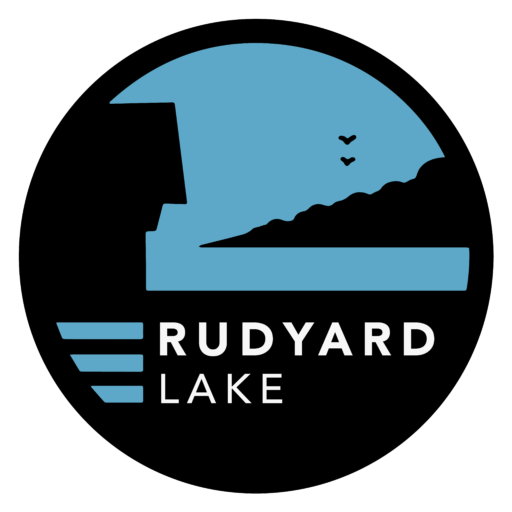
History of Rudyard
Before the Reservoir
The village of Rudyard as we know it today is largely the result of the creation, at the end of the 18th century, of a reservoir in the valley drained by the Dunsmore Brook, to supply the Caldon Canal.
Before this time Rodehyerd, or Rudierd as it was known, consisted of scattered farms and a small number of more substantial residences, such as Rudyard Hall.
The community, set in agricultural land, stretched from Gun Hill, east of the present Leek to Macclesfield road, westward across the Vale of Rudyerd towards Horton.
At the start of the 19th century Rudyard had a population of little over a hundred with the hamlet of Harper’s Gate its main centre of habitation.

“Rodehyerd, or Rudierd as it was known, consisted of scattered farms and a small number of more substantial residences, such as Rudyard Hall.…”
Early tourism
The years between 1800 and 1850 saw a gradual development of Rudyard Reservoir as a leisure destination. Fishing, shooting and boating rights were owned by the Earl of Macclesfield on the eastern side and by the Haworth family on the west.
The local economy began to diversify. The construction of the dam head required quarried stone. A water bailiff and associated labourers maintained the reservoir.
Two small public houses were created and a village Post Office arrived in 1898.

The NSR
The arrival of the North Staffordshire Railway in 1849 marked the start of the heyday of the village, which was now termed a small township.
The Hotel Rudyard, a golf course, pleasure boat trips, footpaths and tea shops drew the crowds from the Potteries in their thousands, alighting at the station just south of the attractions.
Much of the property along Lake Road was built at this time, often offering accommodation and refreshment.
The northern shores of the reservoir saw the erection of many small wooden chalets and a second railway station was built.
This bustling centre for leisure and recreation thrived until the start of the First World War.
Rural decline
Between the wars Rudyard continued to be a popular tourist destination, with charabancs and cars contributing to congestion on the country roads, a pattern that continued in the decades following the Second World War.
However, the growing choice of destinations on offer to holidaymakers and trippers meant that numbers never again reached the pre-war heights. The closure of the railway to passengers in 1960 accelerated the trend.
Chalets and tea houses were demolished and replaced with modern residential properties. The Post Office closed in 1997 and the Poachers’ Tavern, one of two hotels in the village, ceased to trade.
21st century revival
1996 marked the establishment of the Rudyard Lake Trust and the beginning of a new lease of life for the neighbouring village. Lottery Funding and European Commission finance have been used to greatly enhance the facilities at the southern end of the lake, with the creation of three visitor centres.
At weekends and through out the summer months visitors once more gather in numbers to sail, row, fish and walk. The western shore of the lake has become increasingly popular for holiday home construction while the village itself is termed “a desirable location” for those wishing to commute south to the Potteries or north to Macclesfield and Manchester.














